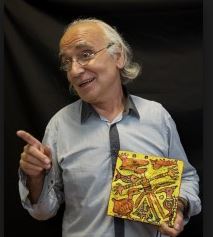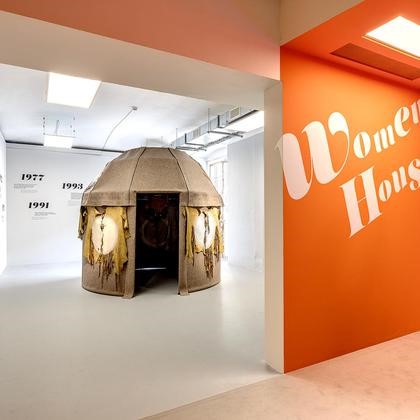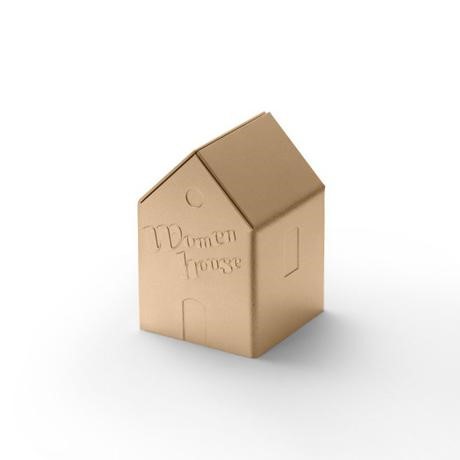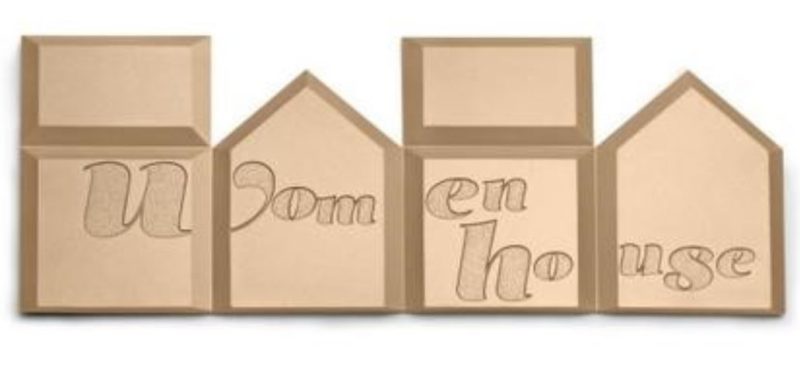From Paris to Washington : new deal for artwork
by Jean-Paul Gavard-Perret
Contributing Columnist
T
he “Women House” exhibition co-produced by the Monnaie de Paris and the Washington National Museum of Women in the Arts links two elements that are always connected in the culture made for men and by them: a gender (the feminine) and a space (the domestic). Indeed, since the world is what it is, the male has seized architecture and public space to “relegate” to women the space which, although private, is for her sometimes refuge but often a prison.
“Women House” proves the opposite. It shows how 39 women artists of the 20th and 21st century take the subject to put the woman back in the middle of a story she was missing. The rules of the presentation touched up the art object created for this occasion. In fact, it reverses – by striking out – the notion of signature in order to value the meaning of the object. This most original production is a mountable structure. The way to symbolize that this space is still to build. It highlights the claim of the work space at home as theorized 90 years ago by Virginia Woolf in “A Room of One’s Own”. In her essay, the English girl encouraged women to find an intimate space.
Camille Morineau, curator of the exhibitions, had the idea to “eternalize” it by the anonymous bronze mountable piece. This proves that, unlike male creators, what counts for such creators, added value, is not so much the signature as the work itself. This goes to the idea of art that the Monnaie de Paris prides itself on initiating, by putting tradition at the service of an experimental art.
De Paris à Washington : nouvelle donne de l’oeuvre d’art
Jean-Paul Gavard-Perret
L
‘exposition “Women House” co-produite par la Monnaie de Paris et le National Museum of Women in the Arts de Washington lie deux éléments toujours reliés dans la culture fait pour les hommes et par eux : un genre (le féminin) et un espace (le domestique). En effet, depuis que le monde est ce qu’il est, le mâle s’est emparé de l’architecture et de l’espace public pour « reléguer » à la femme l’espace qui, quoique privé, est pour elle parfois refuge mais souvent une prison.
« Women House » prouve le contraire. Elle montre comment 39 artistes femmes du XXe et XXIe siècle s’emparent du sujet pour replacer la femme au centre d’une histoire dont elle était absente. Les règles de la présentation ont touché jusqu’à l’objet d’art créé pour cette occasion. Il renverse en effet — en la biffant — la notion de signature afin de valoriser le sens de l’objet. Cette production des plus originales est une structure montable. Manière de symboliser que cet espace est encore à construire. Il met en évidence la revendication de l’espace de travail chez soi tel qu’il fut théorisé, il y a 90 ans, par Virginia Woolf dans Une chambre à soi. L’Anglaise encourageait dans son essai les femmes à trouver un espace intime.
Camille Morineau, Curatrice de l’expositions a eu l’idée de l’ ” éterniser” par la pièce montable » anonyme de bronze. Celle-ci prouve, qu’à l’inverse des créateurs hommes, ce qui compte pour de telles créatrices, la valeur ajoutée, tient moins à la signature qu’à l’œuvre elle-même.Et c’est un beau pied de nez à toute une idée de l’art que la Monnaie de Paris s’enorgueillit d’initier en mettant la tradition au service d’un art expérimental
About the author:
 Jean-Paul Gavard Perret is a contributing editor to Ragazine.CC of On Location/France. You can read more about him in About Us.
Jean-Paul Gavard Perret is a contributing editor to Ragazine.CC of On Location/France. You can read more about him in About Us.
Présentation, interview et traduction de l’anglais (US) par Jean-Paul Gavard-Perret, July, 16th, 2018.



Recent Comments